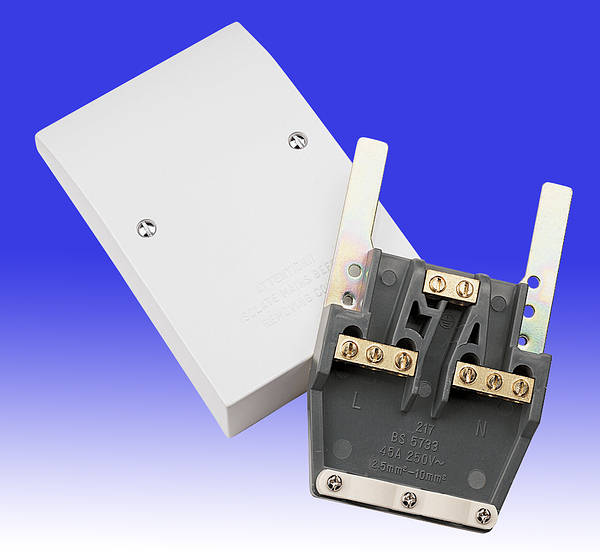Thank you
@SUNRAY this is some thing I have talked about before, but not actually had a case of it happening.
I have looked at many installation instructions for ovens, and non seem to give a maximum overload size, they have the minimum, but not maximum, typical cooker supply is 30/32 amp, and as shown the duel cooker outlet

has been the standard method to have a hob and oven from a supply which was installed for a stand alone cooker, which all seems to make sense as the load for two independent units is in general going to be same as one unit doing all. Well actually my stand alone cooker the oven can draw well over 3 kW.
But it is common for the oven to be wired in cable unable to take 32 amp.
What would be good is a fused connection unit which could take a 15 amp fuse

this would allow us to use ovens designed for 16 amp supplies in the UK, but over 13 amp the fuse box jumps in size, with my mothers house the people refitting the kitchen took a 10 mm² SWA around outside of house and put a small consumer unit in the kitchen for just the kitchen. This was because the house needed a re-wire, with rubber covered cables, and no earth to lights, but it did allow 32 amp RCBO to hob and 16 amp RCBO to oven, but that was a lot of extra work and the

unit at door was not very ascetically pleasing. However it was a good safety feature as the isolators for oven and hob were placed behind the hob so you needed to reach over hob to isolate it.
But until reading this thread I would have said 32 amp was OK, it was when 45 amp supplies were used that worried me.
But so often the oven could not take 10 mm² cable in the terminal box, and even if it did, the internal cable would not take 32 amp never mind 45 amp.
We would not wire a oven to a 100 amp supply, but there seems to be no limit published, 20/25 amp is normally OK for 2.5 mm² depending on cable type and route, I looked up and found.
So it seems 2.5 mm will take 32 amp, with LSHZ cables, you can get twin and earth as LSHZ, but normally it is thermal plastic so not suitable. But it would seem 32 amp in the main is the upper limit.
However for most installations when moving from a stand alone cooker to eye level hob and oven (can't really see the point if oven put under the hob, may as wll be stand alone.) there is little option but use the twin outlet,

I still think we need a fused outlet at 15/16 amp, but can't see a practical way to do it.




